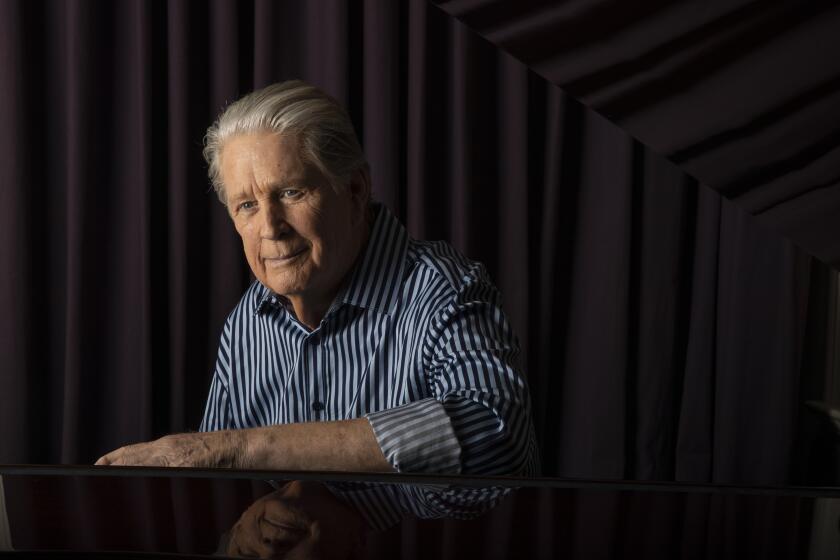Fooling Mother Nature
- Share via
Replicating nature is like being a magician,” says Robert Reid, walking past one of the 100 dioramas at the Natural History Museum of Los Angeles County. Paneled in dark wood, dimly lit and stretching almost forever, the four great halls that contain the dioramas have a timeless grandeur. So it comes as a surprise that they are continually being changed. Reid, a scenic backdrop artist at the museum since 1981, paints the landscapes that form the background for each diorama. “I like to do really big paintings,” says Reid, who, with his broad shoulders, thick beard and long ponytail, has the look of a gentle, middle-aged biker.
One of the museum’s innovations was to release the lions of the Serengeti plains from their glass enclosure. Now rocks spill out into the Hall of African Mammals. Unlike the background rocks, which are made of burlap and plaster, these rocks, often leaned upon and scrambled over by enthusiastic young visitors, are solid concrete. Some of the smaller rocks inside the tableau are real, but with all the rocks painted the same mottled gray, they are impossible to distinguish from the fabricated. “Look carefully at that plant,” he says, pointing to a thorny bush that crosses dimensions--branches from a bush on the ground sprout into trompe l’oeil on the wall.
“I’d never painted a mural,” says Reid, who began his career as a graphic designer in advertising, “but I knew it was what I wanted to do. I’ve always been an enthusiast for evolution and natural history and biology, and I’d always loved this museum.” When Reid arrived 16 years ago, most of the diorama painters were retirees who’d spent decades painting scenic backdrops for the movie studios. “I consider myself so lucky to just come in here and study these paintings,” he says, pointing out landscapes by Duncan Alanson Spencer and Hanson Puthuff--elephants gathered at a water hole, a mule deer at the north end of the Grand Canyon. These painters, says Reid, are the old masters of dioramas. “I just come up sometimes to study how they did things. I remember the day I cracked Duncan Spencer’s cloud code. Clouds and water are the most difficult to do because they’re always in motion.”
A buzzer goes off as several young teenagers, testing the electronic boundaries, attempt to approach the elephants’ water hole. Elementary students, still in the age of awe, walk through the darkened halls in neat lines of hand-holding pairs. “Oh, it all looks so real,” squeals one little girl, her eyes drawn to a monkey perched on a high branch.
We cross a wooden bridge through a simulation of a marsh in the great plains of Alberta, and then are suddenly surrounded by the din of the Amazon rain forest--a two-story exhibit thick with vines, some actual, some constructed. Reid, along with two colleagues, spent six weeks in the Amazon researching and collecting specimens to re-create this teeming bit of the Tropics. At this point, Reid looks at his watch and apologizes. He has to get back to work. There is a major exhibit to finish before he heads out on vacation. Where will he go? He almost looks embarrassed. “Well,” he says, “I’ve saved up six weeks of vacation time, but it’s a working holiday. I’m going to the Columbia River Gorge to create an exhibit there on its history.”
More to Read
The biggest entertainment stories
Get our big stories about Hollywood, film, television, music, arts, culture and more right in your inbox as soon as they publish.
You may occasionally receive promotional content from the Los Angeles Times.










